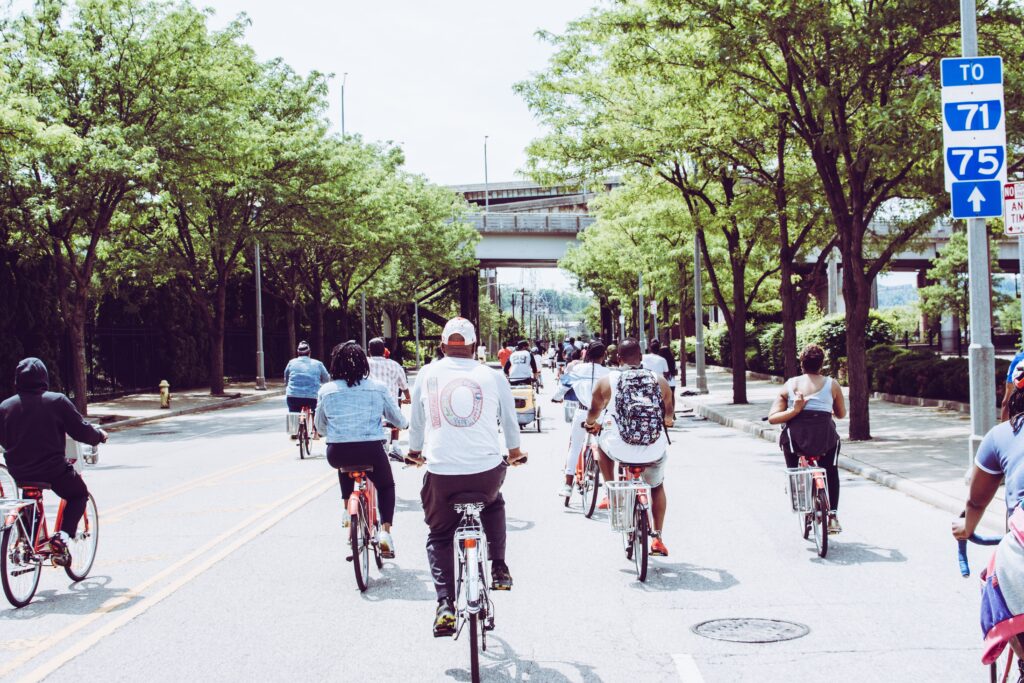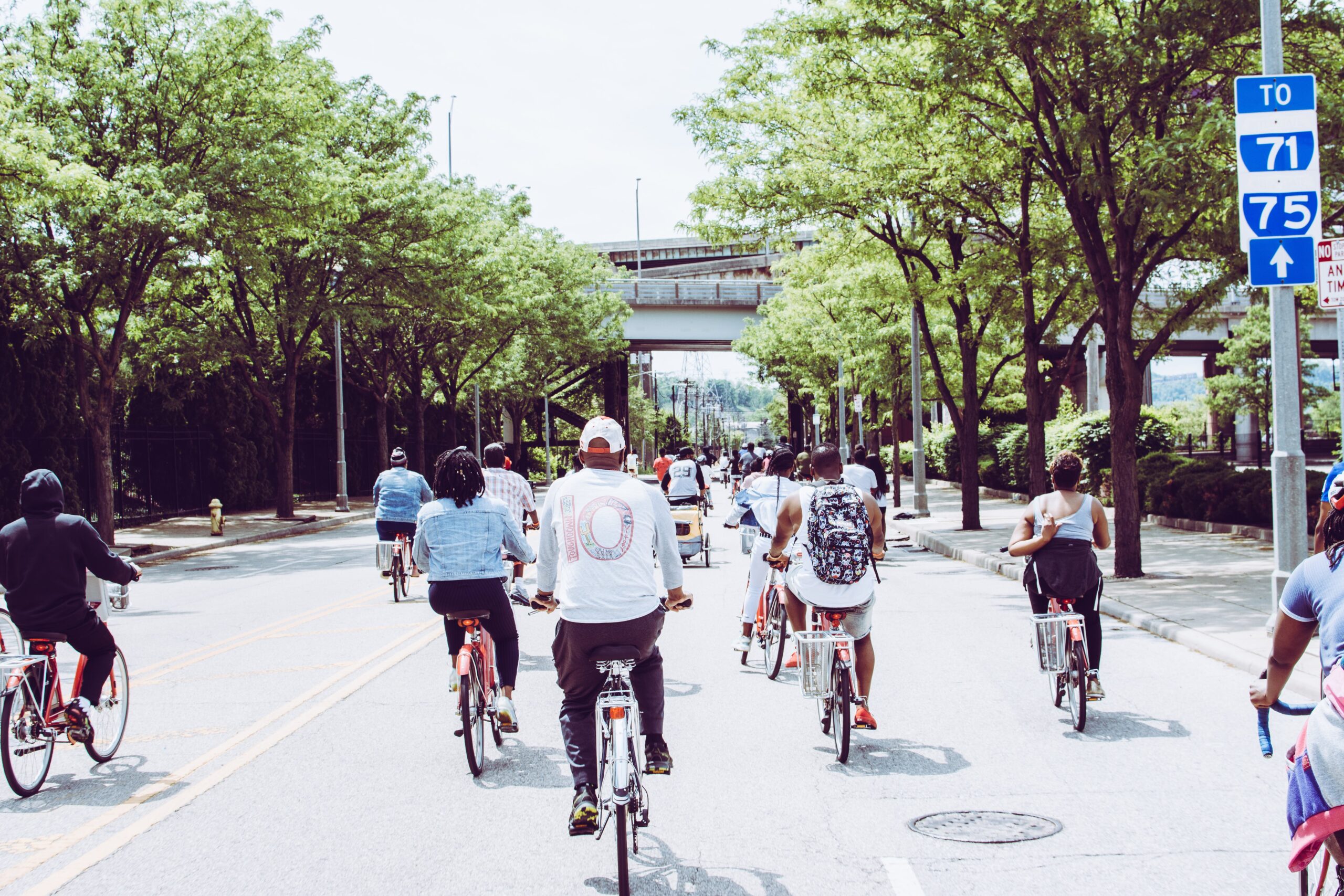
Each morning in Addis Ababa, the bustling capital of Ethiopia, the same scene plays out.
As the sun rises, thousands of commuters jostle for space on public minibuses. Others hop on the city’s light rail line, the first network of its kind in Africa. Notably absent are bicycles; cyclists are not something seen regularly on these streets.
Ephrem Bekele Woldeyesus wants to change that. The 34-year-old co-founded a community organization, Along the Way, that aims to make cycling common in the capital, in part to reduce the greenhouse gas emissions that are driving the climate crisis.
“It’s good for the environment and people’s health,” Woldeyesus said of cycling. “But here, people think it’s not safe. There are too many cars.”
Woldeyesus is among a growing number of campaigners and government officials who want to make cycling and walking safer in Africa’s cities, where roads are notoriously dangerous. They believe that will lead more people to choose what’s known as active mobility, reducing gridlock and helping to counter a climate crisis that is already sowing chaos on the continent of 1.3 billion.
On the agenda
In many ways, Ethiopia has become a model for the environmental potential of active mobility. The country, with support from the United Nations Environment Program (UNEP), has launched an ambitious effort to convince citizens to keep walking and to take up cycling while steering clear of soot-spewing vehicles.
The centrepiece of the push is the country’s non-motorized transport strategy. Launched in 2020, it sets several 10-year targets, including the construction of 3km of footpaths and 2km of bike paths per 10,000 people. It also aims to keep the number of kilometers travelled by private motor vehicles at 2020 levels and reduce pedestrian and cyclist fatalities by 80 percent below 2019 levels.
That is considered crucial for encouraging people to take the two-wheel plunge.
In Ethiopia, there are around 27 road traffic deaths per 100,000 people per year, according to the World Health Organization. The fatality figure is considered high given that there are only 1.1 million cars in a population of 99 million.
Along with the active mobility strategy, Ethiopia has also launched road safety and transport plans while forging a partnership with the private sector to improve walking and cycling infrastructure.
“Cycling is beneficial because it is environmentally friendly, economical, and has health benefits,” said Fetiya Dedegeba, Deputy Executive Director of the Ethiopian Road Safety and Insurance Fund.
A pan-African movement
The active mobility movement is spreading across Africa. In Nairobi, all new roads are built with a footpath and a bike path. Twenty percent of the Nairobi city transport budget is dedicated to active mobility, a policy UNEP has helped push.
Rwanda has introduced fortnightly car-free days where roads are turned over to walkers, joggers, roller skaters, and cyclists. Guraride, an app that allows users to rent bikes and electric-powered two-wheelers, has also been introduced.
As well, the country, with the help of UNEP, developed a national transport policy that calls for all new roads to be built with traffic-calming measures and adequate sidewalks, making them safer for cyclists and pedestrians.
Across much of Africa, though, roads remain perilous. The continent is home to 20 percent of global road traffic deaths, despite only having 3 percent of the world’s registered vehicles. An average of 260 pedestrians and 18 cyclists are killed in Africa every day. That is largely due to a lack of infrastructure, poor urban planning, and bad driving.
Experts believe tackling those safety concerns could lead to a flowering of active mobility across the continent, something that would bring with it a range of benefits.
“Walking and cycling have huge benefits for people and the planet, improving health, reducing our carbon footprint, and improving air quality,” said Rob de Jong, head of UNEP’s mobility unit.
A UNEP report found that a person who cycled instead of taking five short car trips a week would reduce the amount of greenhouse gases they are responsible for by 86kg a year.
The move away from cars and minibuses, many of which are ageing and heavily polluting, would also help to reduce other types of airborne contaminants, said de Jong.
“Many of these vehicles emit 10 times what they should,” said de Jong, who added that in many African countries, automobile numbers double every decade. “Motor vehicle ownership is rapidly increasing, so this is something we need to be critically aware of.”
Open streets
In Ethiopia, Seble Samuel, a cycling advocate, set up a campaign called Streets for the People, which, on the last Sunday of each month, sees thoroughfares closed to cars.
On those days, the streets take on a party feel as hundreds of cyclists are joined by skateboarders, rollerbladers, joggers, and families picnicking.
The movement started in Addis Ababa but has now spread to other Ethiopian cities, such as Jimma Mekelle and Bahir Dar.
“I’d lived in South America and seen how open street days could bring communities together,” said Samuel. “In Ethiopia, cycling is seen as something poor people do. If we lift those barriers, we can tackle air pollution while promoting healthy and sustainable transport.”
by UNEP


